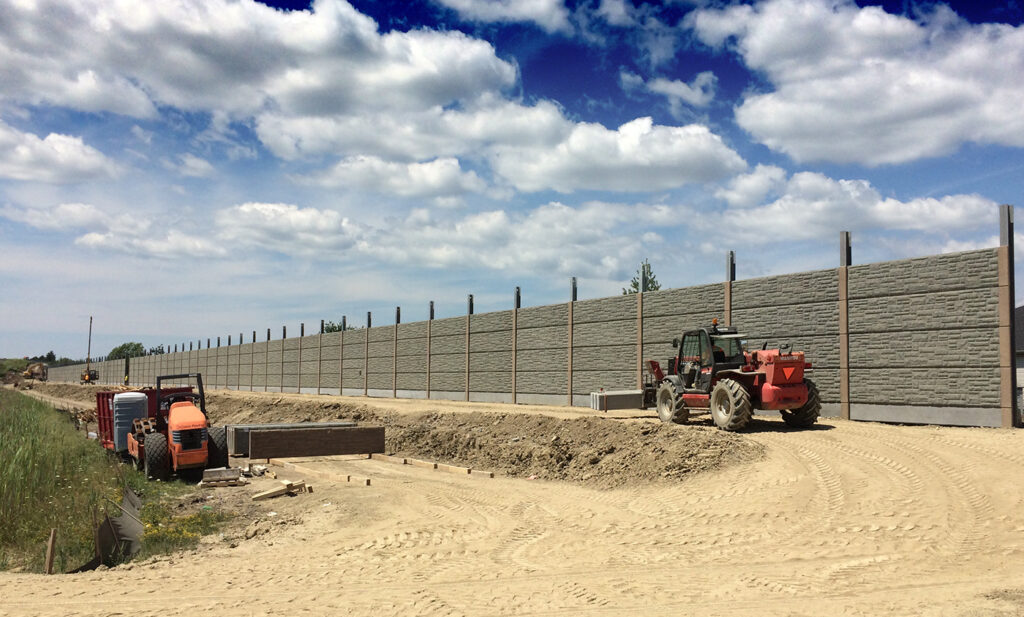In the ever-growing urban landscape, the challenge of balancing the need for infrastructure with environmental stewardship is an increasingly critical one. As city skylines expand and populations surge, so too do concerns about the impact these urban environments have on our planet. Sustainable urban development has emerged as a vital strategy, with professionals in urban planning, environmental engineering, and green construction leading the charge.
One of the key areas where innovation is making significant inroads is in the development of eco-friendly sound barriers. These structures, designed to mitigate the impact of noise pollution from roadways and transportation systems, are pivotal in maintaining the livability of urban spaces. Alongside these advancements, the growing emphasis on accessible transportation helps ensure that sustainable infrastructure supports inclusivity and mobility for all.
Replacing traditional sound barrier materials with more sustainable options, we not only reduce the carbon footprint of our cities but also enhance the well-being of their inhabitants.
Understanding Sound Barriers
Construction sound barrier is a physical structure erected alongside highways, railways, and industrial estates to shield nearby communities from intrusive noise. They play a crucial role in reducing noise pollution, a leading urban hazard associated with stress, sleep disturbance, and even health complications.
These barriers come in various forms, from simple berms to sophisticated and aesthetic transparent panels. While designs and materials vary, their core intent remains constant: to absorb or reflect sound waves, preventing them from reaching sensitive areas.
Despite their undeniable utility, traditional sound barriers pose a significant challenge to the eco-conscious planner. Their construction typically involves materials such as concrete, steel, and plastics, which are often resource-intensive and non-biodegradable, contributing to urban sprawl and environmental contamination.
Current Challenges in Sound Barrier Construction
The environmental impact of traditional sound barrier materials cannot go unaddressed. The extraction and production of these materials result in significant carbon emissions and ecological disruption. Furthermore, the very presence of sound barriers, despite their beneficial role in noise reduction, signifies a compromise in the natural acoustic environment of an area.
Noise pollution itself remains a significant challenge; current sound barriers may lessen the immediate impact, but the noise is often diverted to other parts of the city, creating acoustic “hot spots.” These paradoxical zones showcase the limitations of current systems and the need for holistic, sustainable solutions.
Eco-Friendly Sound Barrier Solutions
In response to these challenges, a wave of innovation is bringing about sustainable sound barrier solutions. By employing novel materials and construction techniques, the new generation of sound barriers is redefining what it means to build with the environment in mind.
One promising direction is the use of recycled and biodegradable materials for construction. Reclaimed wood, recycled plastics, and composite materials made from renewable resources offer robust and long-lasting alternatives to traditional barriers, without the environmental baggage.
Innovations in Sound Barrier Technology
Construction sound barrier’s technology innovation is as diverse as it is exciting. Emerging materials such as hollow bricks made from recycled plastics, and high-tech aerogels are paving the way for structures that are not only quieter but also more sustainable.
Aerogels, in particular, promise to revolutionise sound barrier construction. These ultra-light materials possess exceptional sound-absorbing properties and can be made from a variety of biocompatible sources. The combination of efficiency, low weight, and eco-friendliness positions aerogels as a leading candidate for the sound barriers of tomorrow.
Moreover, advances in green manufacturing processes, including 3D printing with sustainable material inks, are opening new frontiers for custom-designed sound barriers that align with the unique aesthetic and acoustic requirements of urban landscapes.
Conclusion
As we look to the future, it is clear that eco-friendly sound barriers will be an essential component of sustainable urban development. The triple benefits of mitigating noise pollution, reducing environmental impact, and enhancing the urban fabric highlight the profound potential of acoustic infrastructure to lead by example in green construction.
The journey towards more sustainable cities is ongoing, and the integration of eco-friendly sound barriers is just one step in a broader transformation. By championing innovative designs, materials, and policies, we can create urban environments that are not only efficient and livable but also regenerative for the planet.
Urban planners, environmental engineers, and green construction advocates must continue to collaborate and drive these initiatives forward. The call to action is clear: it’s time to silence the noise of urban sprawl and let the harmony of sustainable development speak for itself.










